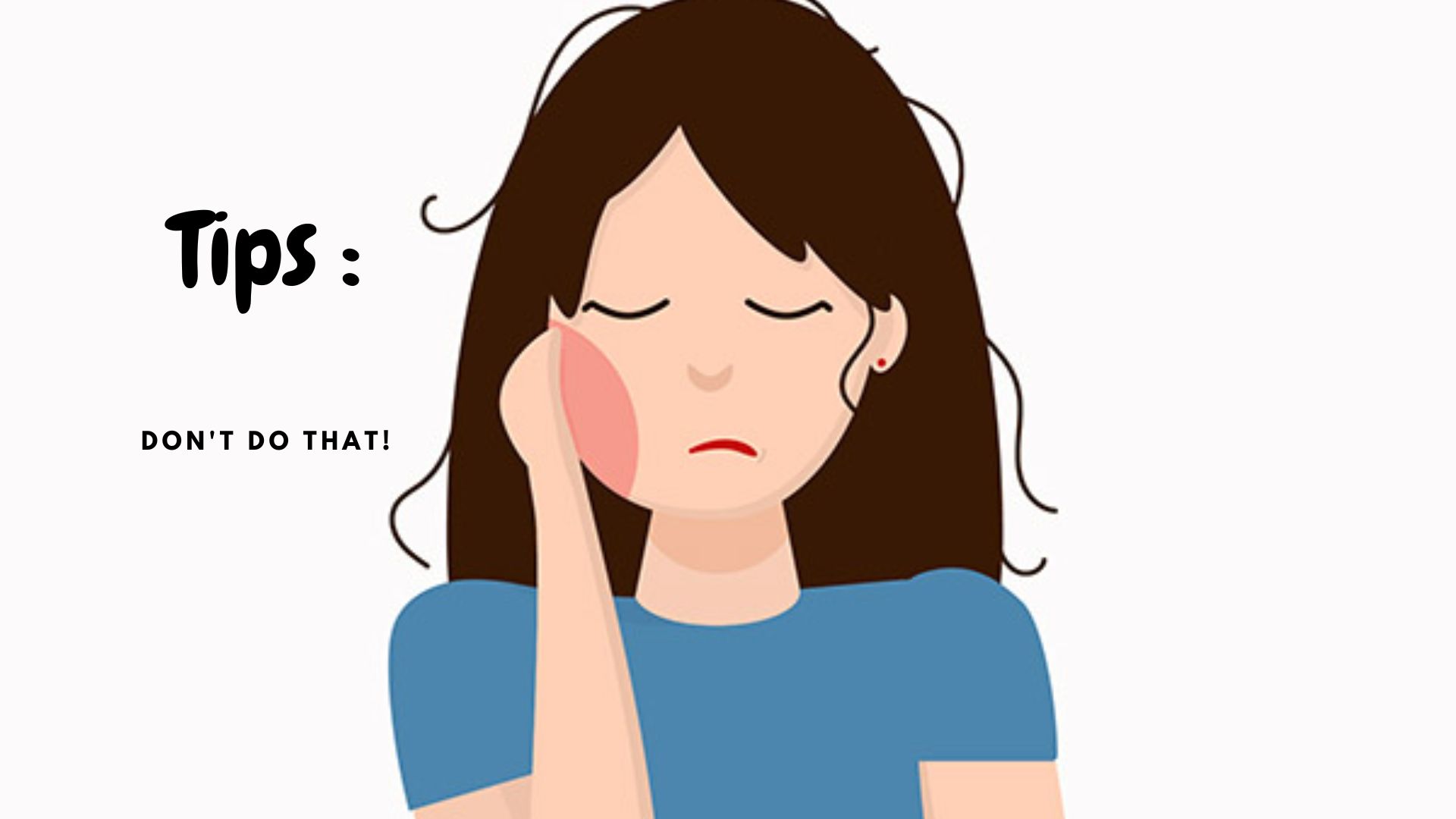In This Article
How to Drain a Gum Abscess at Home?[Step by Step]
Aug 18, 2023

When you have problems with oral health, it can be hard, especially if you have painful signs like gum abscesses.
Even though seeing a dentist is always a good idea, getting an appointment can take a while. Knowing how to drain a gum abscess at home isn't a replacement for seeing a doctor. But it can give you brief relief and stop more problems from happening.
This guide will show you step-by-step how to drain a gum abscess at home. However, it's important to stress that you should always see your doctor first. Self-treatment has risks and isn't always effective.
Manifestations of Gum Abscess:
Before figuring out how to drain a gum abscess at home, let's talk about what are the manifestations of it!
Gum abscesses are mainly caused by the presence of bacteria in the mouth. Common causes include poor oral hygiene, tooth decay, gum disease, or dental trauma. Bacteria invade the gum tissue, leading to infection and pus-filled periodontal pockets. The signs are:
- Sharp, throbbing pain around the affected area
- Swelling and redness of the gums
- Sensitivity to hot and cold temperatures
- Difficulty chewing or biting
- Bad taste or odor in the mouth
- Lymph nodes in the neck or jaw that are swollen
Complications of Not Draining A Gum Abscess on Time
If you don't treat a gum abscess, it can lead to problems that can be very bad for your mouth health.
These complications include:
- Spreading of the infection. The infection can spread to nearby teeth, bones, and even the bloodstream. It causes a very dangerous systemic infection.
- Tooth loss. If an abscess isn't addressed, it can hurt the bone and tissue around it, leading to tooth loss.
- Chronic Inflammation. Infection and inflammation may lead to chronic gum disease, affecting oral health.
- Recurrent abscesses. Gum sores can come back if not treated properly, causing pain and needing more help.
How to Drain a Gum Abscess at Home?
Getting the right tools and supplies is important before trying to drain a gum abscess with home treatments.
Proper preparation will ensure a safe and sanitary environment for the procedure.
Step 1: Get the tools you need.
How to drain a gum abscess at home? The first step you need to prepare:
- Clean towels or washcloths
- Sterile gloves
- Tweezers or sterilized needles (preferably medical grade)
- Antiseptic mouthwash or saline solution
- Mild antiseptic solution (such as diluted hydrogen peroxide)
- Warm water
- Salt
Before you start draining, ensure you have all the tools and supplies you need and that they are easy to get to.

Step 2: Rinse with warm salt water to relieve pain
Warm salt water rinses temporarily relieve swelling and pain.
- Prepare the rinse by dissolving ½ teaspoon of salt in a cup of warm water.
- Place the solution in your mouth, rinse gently for about 30 seconds, then spit it out.
- Do this as many times a day as needed to relieve pain.
Step 3: Identify and locate the abscess
Identifying and localizing a gum abscess is important in effectively managing the condition. You can give the right treatment if you know what the signs are and exactly where the cyst is.
Gum abscesses typically present with the following signs and symptoms:
- A persistent pain or throbbing sensation in the affected area.
- Gums around the cyst that are swollen and red.
- Sensitivity to touch or pressure on the affected area.
- Formation of small, raised lumps or pimple-like structures on the gums.
- Pus or blood drains from the cyst.
Step 4: Identify an abscess by gentle palpation
After you see what might be an abscess, you can confirm its location by gently touching it. Wash your hands thoroughly and use clean, sterile gloves (if available).
Use a clean finger or swab to gently press the area around the suspected abscess. It could be an abscess if you feel pain, pressure, or a spot that moves around and hurts or leaks fluid.
Step 5: Apply steps to safe and effective drainage
After ensuring the location of a gum abscess, you should be careful to start the following process:
- Use tools that clean and sanitize your hands: wash your hands well with soap and warm water. If you have tweezers, clean them with alcohol or use clean needles.
- Use a warm compress on the place that hurts. Soak a clean sponge or towel in warm water and apply it gently to the abscess. It makes the skin smoother and makes drainage easy.
- Puncture the abscess with a clean needle. Ensure you carefully open a hole in the tip using a clean needle or sterile tweezers. Avoid excessive force or deep punctures to minimize tissue damage.
- Apply gentle pressure to drain pus. Put gentle pressure on the abscess with clean hands or a sterile cloth to help it drain. Be careful not to squeeze or put too much pressure on something, as this could hurt or hurt you more.
- Rinse the mouth with a mild antibacterial solution. After drainage, rinse the mouth with a mild antibacterial solution. It can help get rid of germs and lower the risk of infection.

The mild antibacterial solution is like diluted hydrogen peroxide or antibacterial mouthwash.
Caution: Potential Risks
Draining a gum sore at home is only a short-term solution until you can see a dentist.
The following risks and limitations are associated with home drainage:
- Inadequate drainage. Using the wrong method or tools can lead to incomplete drainage. It can leave some infection behind and slow down the healing process.
- Risk of injury. Without proper training, injury or additional damage to surrounding tissues may occur.
- Spread of infection. If abscesses are handled incorrectly or unclean tools are used, the infection could spread to the mouth or other body parts.
When to Seek Help?
Even with proper precautions, complications may occur during home drainage. If you experience any of the following, seek professional dental help immediately:
- Excessive bleeding that does not subside after light pressure.
- Severe pain or increased discomfort.
- Signs of spreading infection include increased swelling, redness, or fever.
- Difficulty breathing or swallowing.
Tips for Caring for Draining A Gum Abscess:
To promote healing and prevent reinfection, consider the following tips:
- Don't eat or drink things that are too hot, spicy, or acidic because they might hurt or irritate you.
- Choose a soft or liquid diet for the first few days after drainage to reduce pressure on the healing area.
- Don't smoke or use tobacco products. They can make healing take longer and increase the risk of problems.
- To avoid further infection or injury. Don't touch or poke the abscessed area with your fingers or anything else.

Conclusion
How to drain a gum abscess at home? We have demonstrated to you five effective steps you should follow! But it's important to know the limits and possible risks of self-treatment.
The information provided in this guide is separate from professional dental care.
Abscesses on the gums are serious oral health problems. It needs to be taken care of right away by a trained dentist.
If you try to drain the abscess at home, you could make things worse. The solution is to spread the infection or hurt the tissues around it.
If you face an abscessed gum, contacting a dental professional as soon as possible is best.
Dentists have the knowledge, skills, and tools to find out what's wrong and fix it correctly. Until you can see a doctor, you can take care of pain and discomfort at home with what we've discussed here.
Remember that your oral health is an important part of your general health. And the most important thing you can do is get professional help when needed.
Share this article














